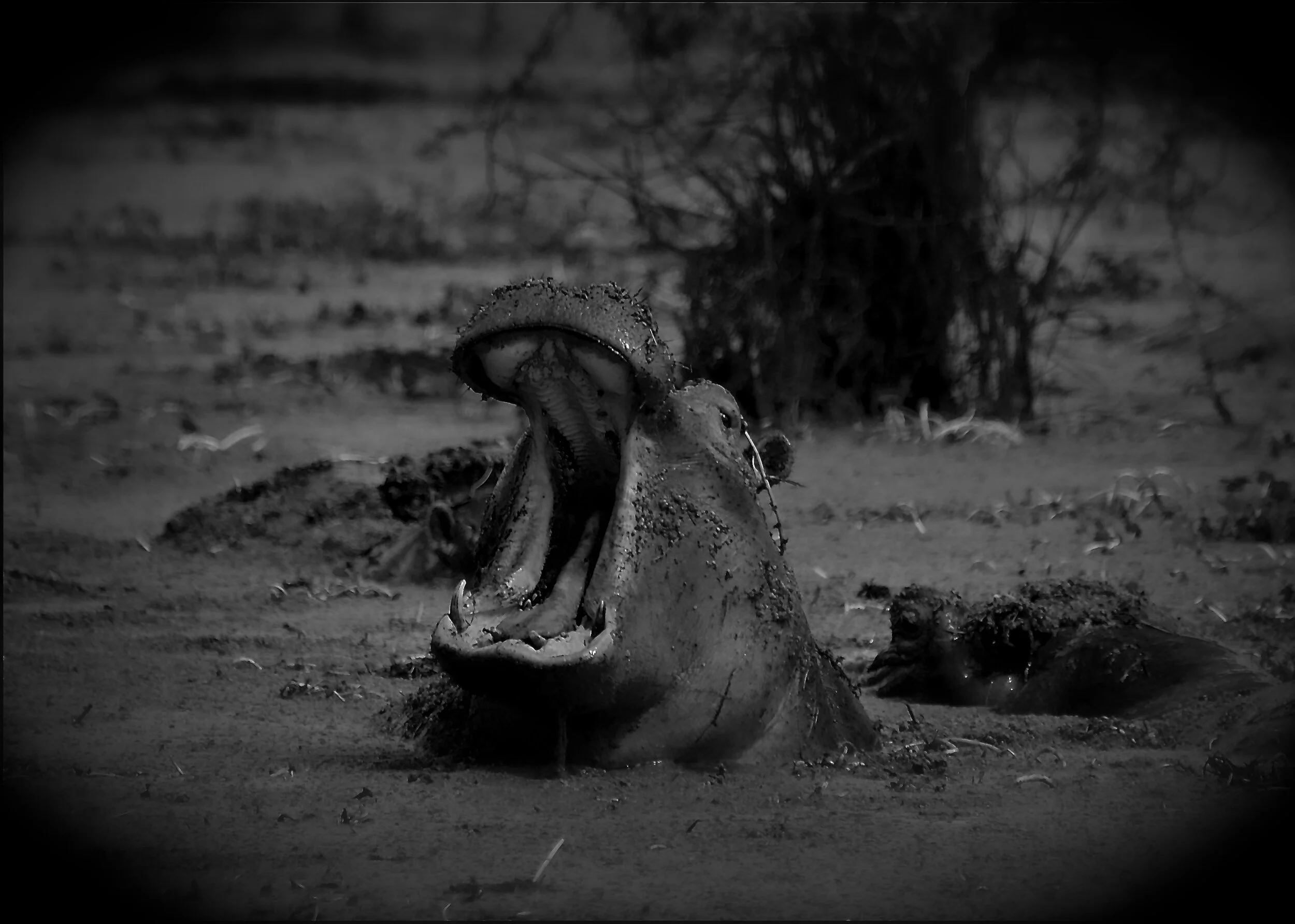“There is an eagle in me that wants to soar, and there is a hippopotamus in me that wants to wallow in the mud.”
“The Nile produces a creature even mightier than the crocodile,” Pliny the Elder wrote in AD 77: “The hippopotamus.”
Think of the hippo as a river horse — social, but territorial, and notoriously short-tempered. .
“It has hooves like those of oxen; a horse’s back, mane and neighing sound; a turned-up snout; a boat’s tail and curved tusks, although less damaging; and an impenetrable hide used for shields and helmets, unless soaked in water. The hippopotamus feeds on crops, marking out an area in advance for each day, so men say, and it makes its footprints lead out of a field so that no traps are prepared for its return.”
Pliny, writing in the 1st Century, was surprisingly accurate in many of his accounts of natural history, but he can be forgiven for missing the boat, if you will, on one of Nature’s oddest and — we now know — mercurial large mammals.
Those who claim to be in-the-know often say hippos kill more people than any other warm-blooded large mammal in Africa, and while technically true that statistic — like so many statistics — is misleading.
Hippos have a bad habit of flipping boats, especially if they feel threatened, and the plain fact is most villagers who live in Africa’s interior wilderness areas never learn how to swim. Why would they? It’s not like living by the sea, and Africa’s riverine waterways are widely known for their parasites, water-borne diseases, treacherous currents, and crocodiles. It’s not an ecosystem conducive to swimming lessons, by and large, unless of course you happen to be born a hippo.
Hippos, with their life-lived, weather-worn facial expressions and massive maws, inlaid with giant tusks to rival those of many elephants, are genuinely photogenic — provided, that is, the photographer catches them during one of the few moments of the day they’re not immersed in brown water, save for a pair of beady eyes and flaring nostrils.
Misunderstandings, misinformation and false facts about “river horses,” as they’re widely known, exist to this day. The truth, as is often the case, is more interesting than any fiction.
Hippos are semi-aquatic. They often stay in the water for up to 16 hours at a time, but they often emerge at night to feed.
This is when they’re most vulnerable to human-wildlife conflict, and getting between a hippo and water, especially in the dark of night, is a bad idea.
Hippos mate and give birth in the water. This makes them virtually unique among amphibious animals, as most amphibious animals do the opposite. Infants suckle in the water.
Hard as it may be to believe, hippos don’t often swim, even though they are good swimmers. Hippos usually stand on their feet in parts of the river or lake that are just deep enough to allow them to submerge themselves. In deep water they often walk on the riverbed or lakebed, on occasion leaping to the surface to breathe. A hippo can hold its breath for up to five minutes at a time.
Hippos can stretch their mouths to almost 180° when open. What may look like a yawn often isn’t: A wide-open yawn is a warning sign.
Hippos may appear to the human eye to suffer from sunburned backs — a reason for their perpetual ill temper, goes one theory — but in fact that seeming “sweat” of red and orange pigment is a natural sunscreen.
A 2004 study in the journal Nature and later reported in National Geographic found that the red pigment contains an antibiotic, while the orange pigment absorbs UV rays. Now you know.
Like nearly all of Africa’s large land mammals, the hippo’s future in the wild is uncertain. The IUCN Red List of threatened species lists hippopotamus amphibious as vulnerable, which the International Union for Conservation of Nature defines as being at high risk of unnatural, human-caused extinction without further intervention.
Pliny again:
“The hippopotamus stands out as a teacher in one branch of medicine. For when it lumbers ashore after excessive eating — in which it indulges all the time — to look for recently cut rushes, and sees a very sharp stalk, it presses its body on to it and pierces a vein in its leg, and so, by losing blood, lightens it body, which would otherwise become ill. Then it covers up the wound again with mud.”
We know that last part not to be true. Pliny may have been a polymath, and he got a lot right about hippos, but he couldn’t be right about everything.



